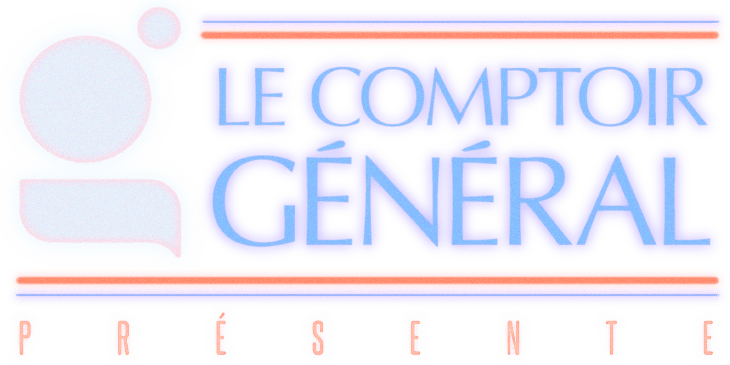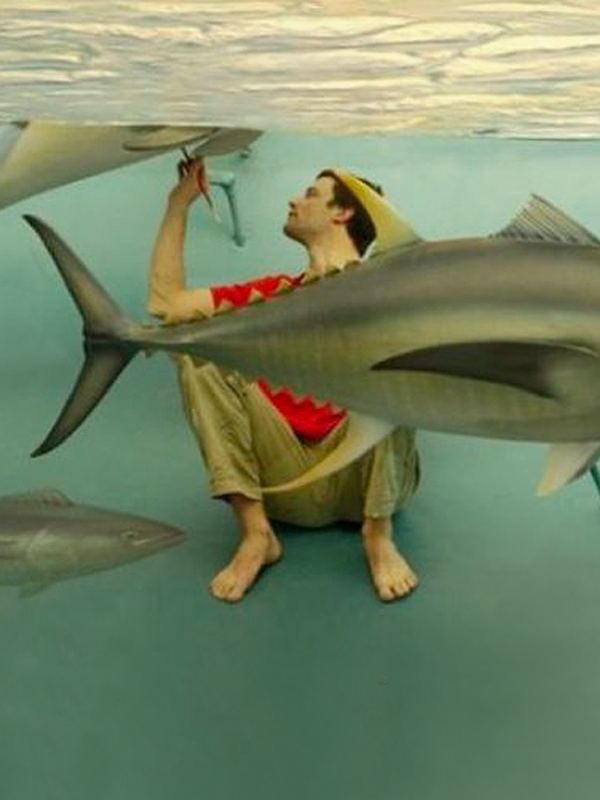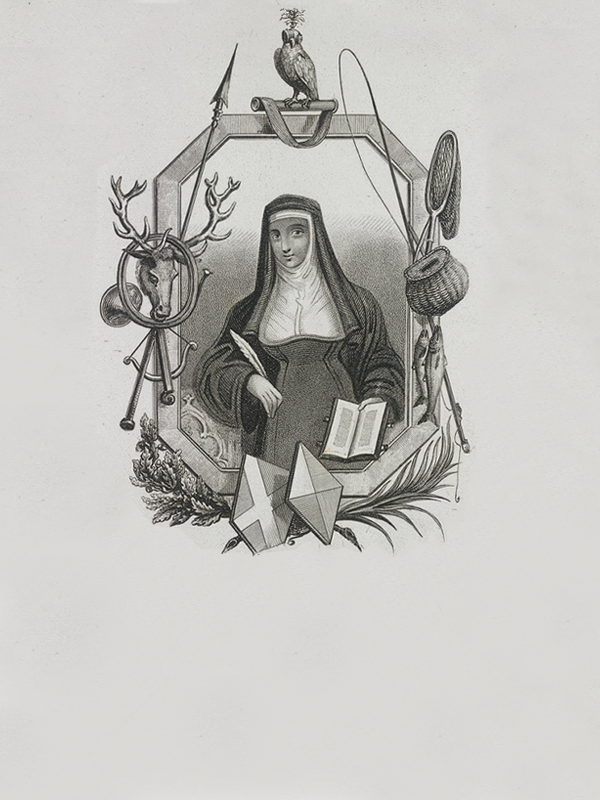
Taxidermy
Taxidermy

Taxidermy, also called naturalization, is the art of preparing dead animals to preserve them with an appearance of life. The term comes from the Greek taxi (quick preparation) and derma (the skin).
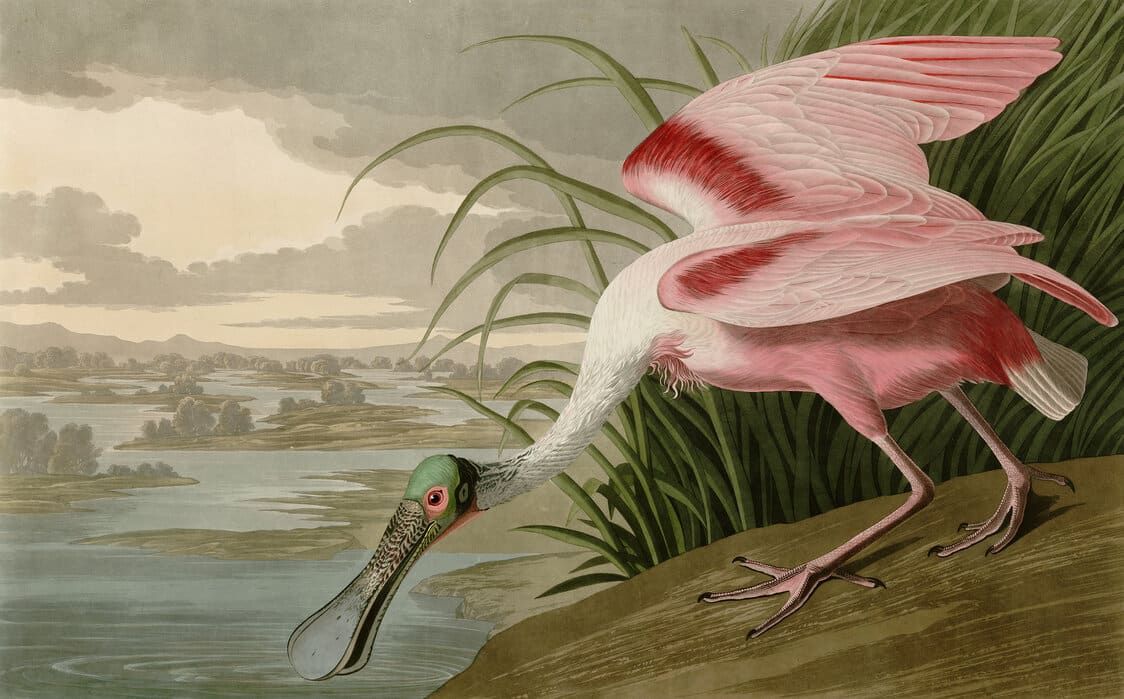
Audubon, born in France, became in the 19th century, the greatest specialist of birds in the United States.
As early as prehistoric times, man began to master the basic techniques of tanning, obviously first of all for clothing. But it is really only from the Middle Ages that the improvement of the techniques of conservation of the skins will allow, in the following centuries and in particular in the Renaissance, with the beginning of the cabinets of curiosities, to “prepare” dead animals (mammals, birds and reptiles especially) by giving them the “frozen” appearance of the living.
It all began in the Renaissance with the cabinets of curiosities.
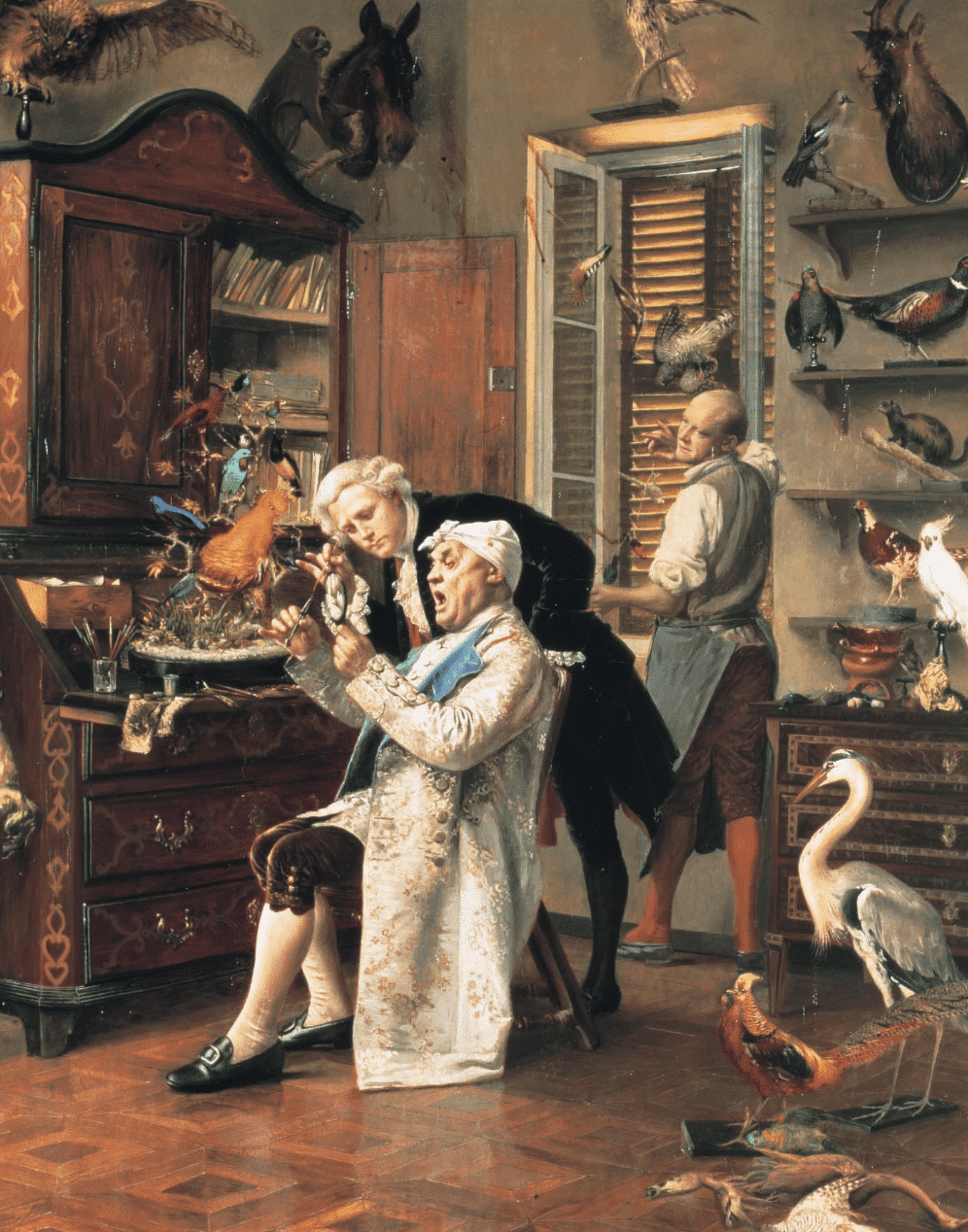
Buffon, in his house-museum of Montbard, with a lot of magnificently "stuffed" birds.
At the end of the 17th century, the French physicist and naturalist Réaumur built up a very rich cabinet of curiosities in which he tried to collect a specimen of each animal species known at the time. For this “jack-of-all-trades” scientist, a cabinet of curiosities is not simply a museum dedicated to the accumulation of collections but must be above all a scientific tool in its own right, allowing for a better understanding of the way of life of the animals he studies. And these animals range from insects (his Mémoire pour servir à l’étude des insectes, published in 1732, has remained famous), to the largest mammals, including birds, reptiles and also shells. His cabinet is one of the richest in Europe, and in particular his collection of birds, most of which are preserved “in skins”, thanks to a process of “tanning” that he developed, in order to preserve them from insect attacks. His nephew, who at the death of Réaumur, will recover the skins, will “mount” a large part of them, by “stuffing” them. This collection of stuffed birds will be recovered by Buffon who will integrate them in the King’s Cabinet (current Museum of the Jardin des plantes). Réaumur and his nephew, at least for the birds, must be considered as the precursors of modern taxidermy (we should actually talk about stuffing), from the beginning of the 18th century.
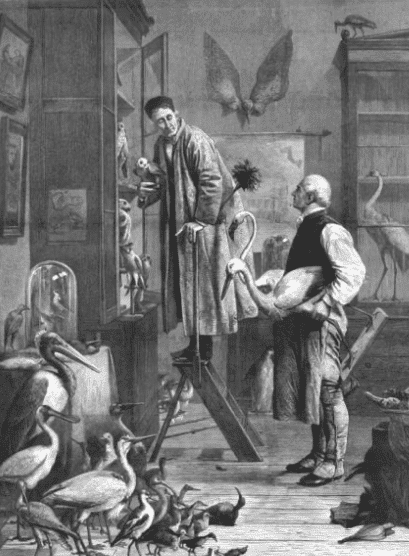
Every practice had to have an "ornithological" showcase with many stuffed birds.
In the 19th century, British colonists and soldiers enriched the collections.
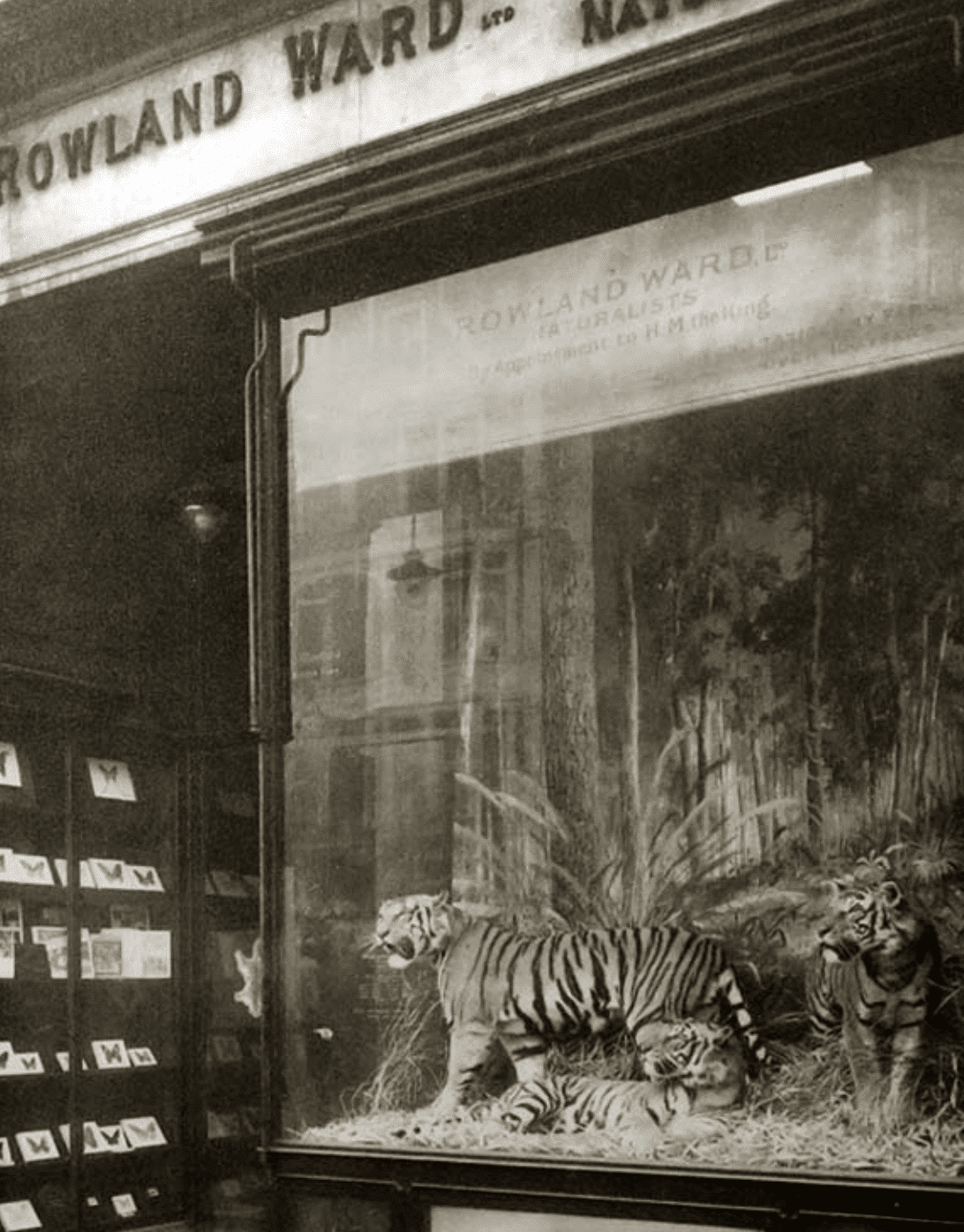
Rowland Ward in London, in the 19th century, was the most famous and important taxidermy company in the world.
But it is really at the beginning of the following century, from 1820, that a real craze for taxidermy and curiosity cabinets took place. The English, with their empire on which the sun never set, received tens of thousands of exotic birds, preserved in “skin”, which the Rowland Ward company in London “naturalized” for private individuals as well as for museums. In France, the Deyrolle company, founded in 1831 (and which still exists), contributed to the enrichment of dozens of collections of birds, reptiles and mammals, both private and public. It is thus from the middle of the XIXth century and throughout the last century, that the profession of “stuffer” developed in England, in France, then in the United States and in the whole world, which was to become taxidermist.
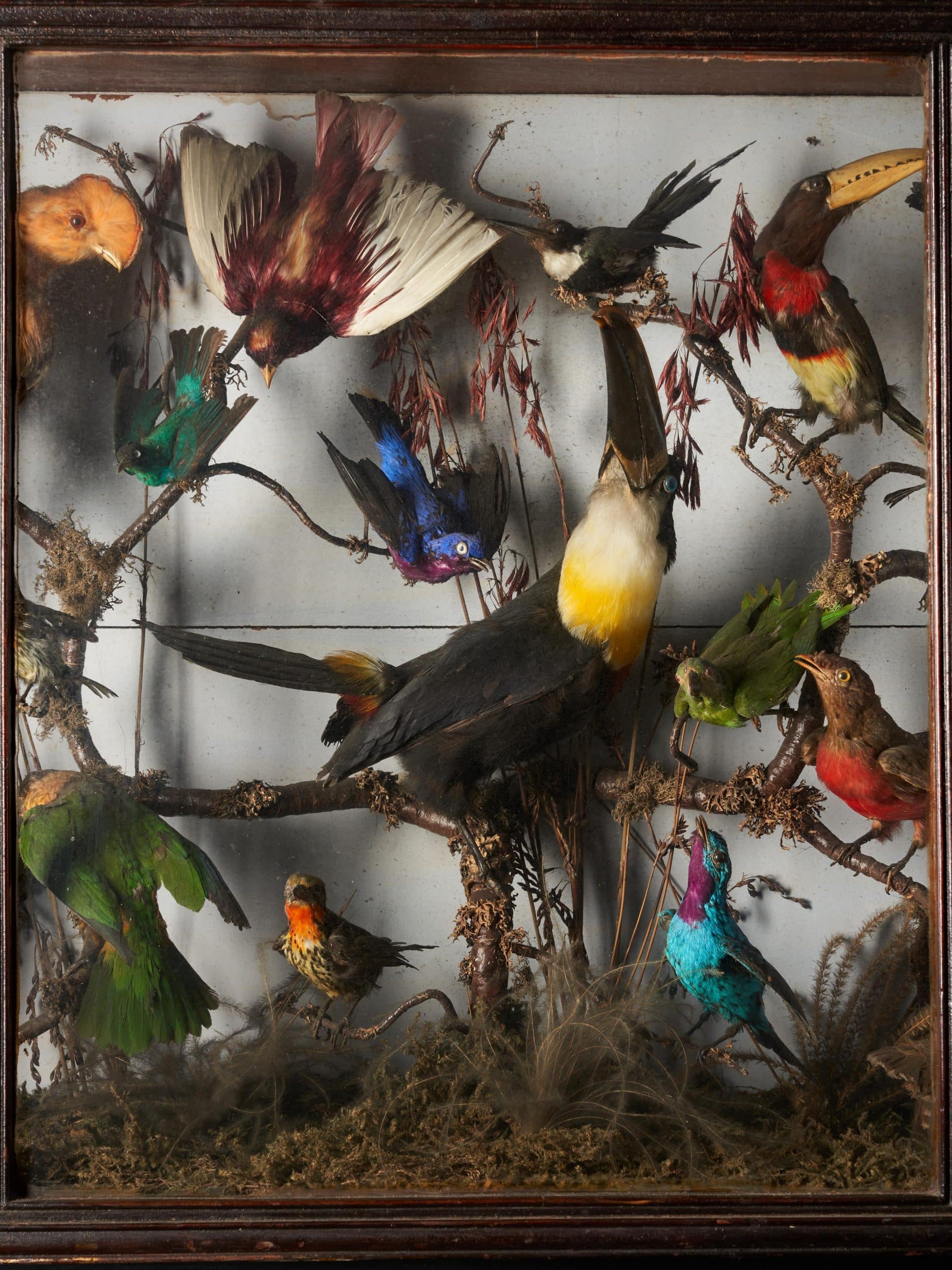
A splendid diorama under glass, with magnificent birds of South America.
The customers are mainly hunters who love trophies.
In the beginning, the prepared skins of birds, mammals or reptiles were filled with straws or curls that were modeled after the body of the animal, to give it an appearance of life. In order to restore the animal’s characteristics as best as possible and to make the reconstruction as realistic as possible, glass eyes and modeling clay were used for certain organs, which could not be tanned, such as the tongue. Until the middle of the 20th century, the clients of the “stuffers” were private collectors (of birds in particular), and for many hunters who had their trophies “naturalized” (heads of roe deer, stags, wild boars), or even rare birds such as certain birds of prey (considered before 1960 as pests) or spectacular birds such as certain ducks or pheasants. The great hunt in the English and French colonies also provided a lot of work to the “naturalists” who stuffed what is still called “cape heads” of large antelopes (kudu, oryx, gazelles…), buffaloes, and even big cats (lions, leopards, tigers…). The big museums that had to maintain, or even renew their collections, generally had their own taxidermists.
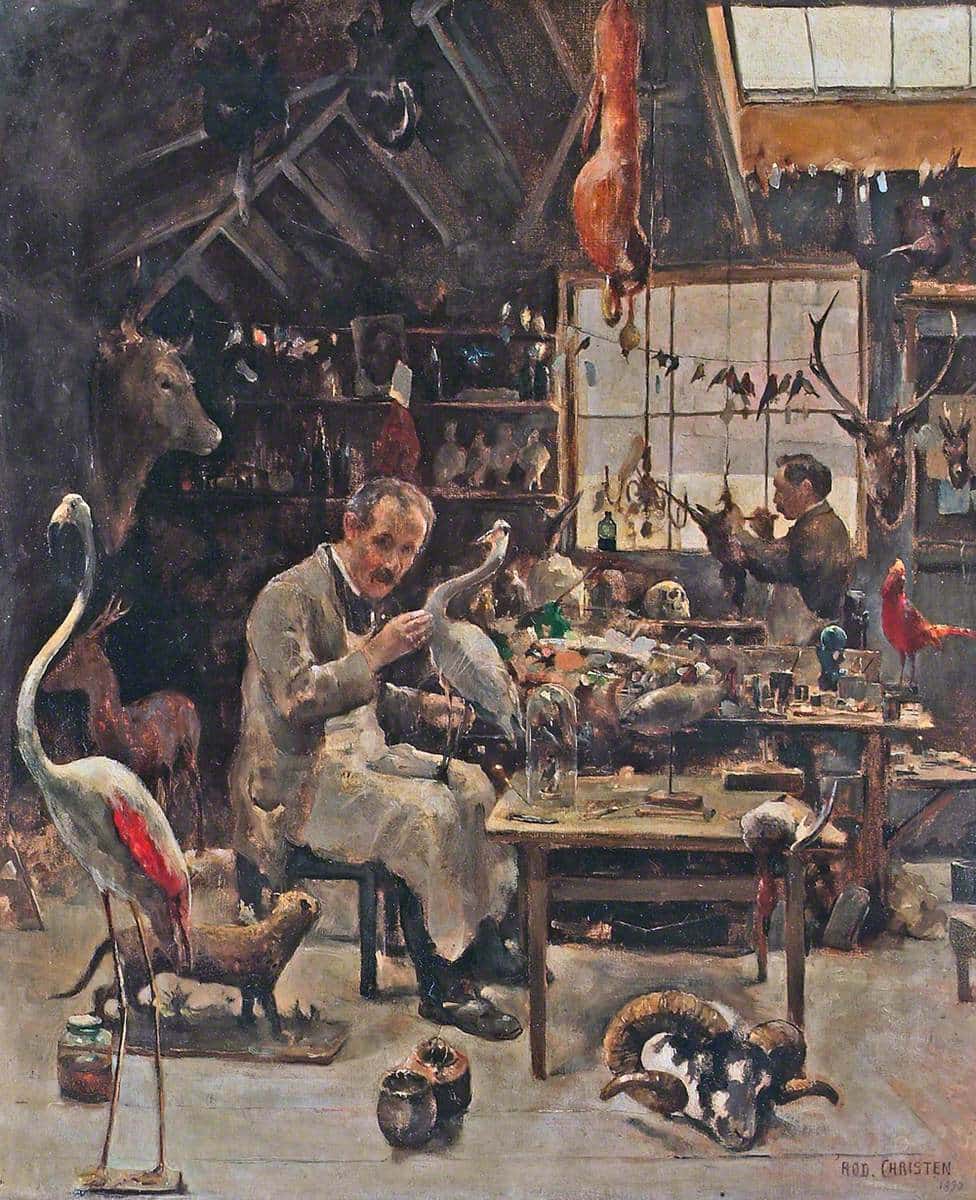
In the workshop of the taxidermist.... a trade which unfortunately is lost.
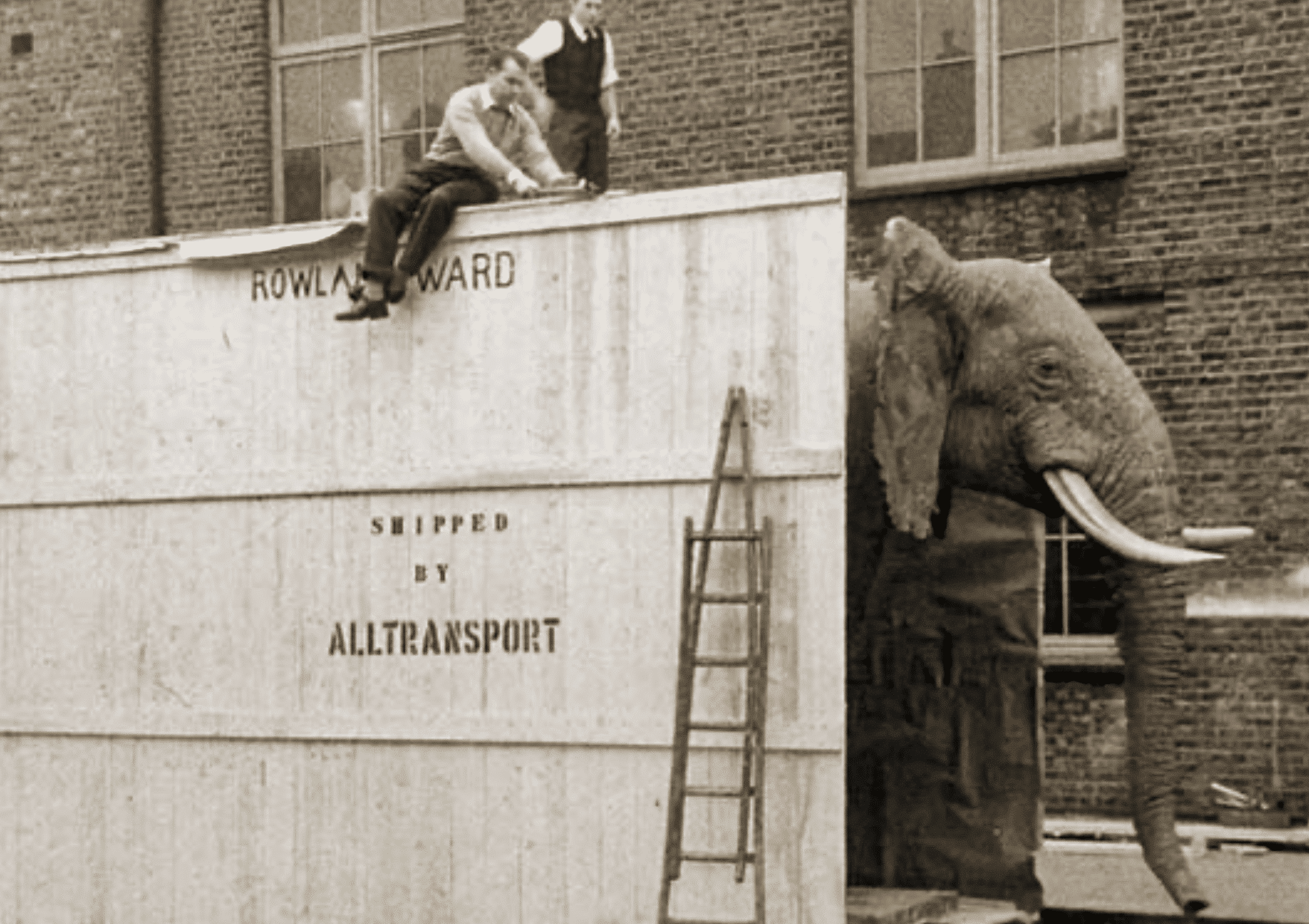
Delivery for a museum, of an African elephant taxidermized by Rowland Ward.
From the second half of the last century until today, even if the profession is in decline, we can truly speak of taxidermists, some of whom are true artists, who, after removing the skin of the animal (bird, mammal, reptile, and even fish for rare specialists), tan it or have it tanned by specialized workshops, in order to make it rot-proof, against the attacks of insects, worms, bacteria or fungi, which could feed on it.

Although it is not strictly speaking taxidermy, collections of butterflies and more generally of insects, are very appreciated as decoration in private homes as well as in cabinets of curiosities.
The skin thus preserved is then softened for the actual assembly. With the advent of plastic or synthetic materials, notably polystyrene, which can be easily sculpted or modeled, it is no longer necessary to use straw or crimp. The taxidermist makes himself or buys a “mannequin” in polystyrene (light and rot-proof material, easy to work with…), or other synthetic foam or resin, reconstituting the general shape of the animal in a given posture. Once the skin is put on the mannequin, it is necessary to proceed, as for a made-to-measure suit, to small alterations either on the skin itself, or on the mannequin’s shape, before the final sewing. Finally, to finalize the “naturalization” it is necessary to paint the lips and the perimeter of the eyes of the mammals or the legs and the beak of the birds and to place the glass eyes.
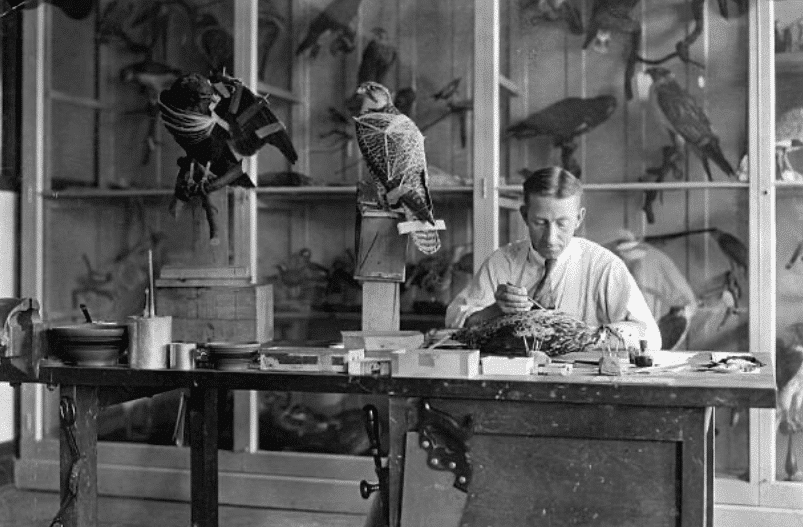
The profession of taxidermist, requires certain gifts of observation of wild animals in nature, as well as artistic gifts in the workshop, to "render" the illusion of life.
